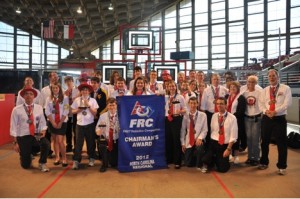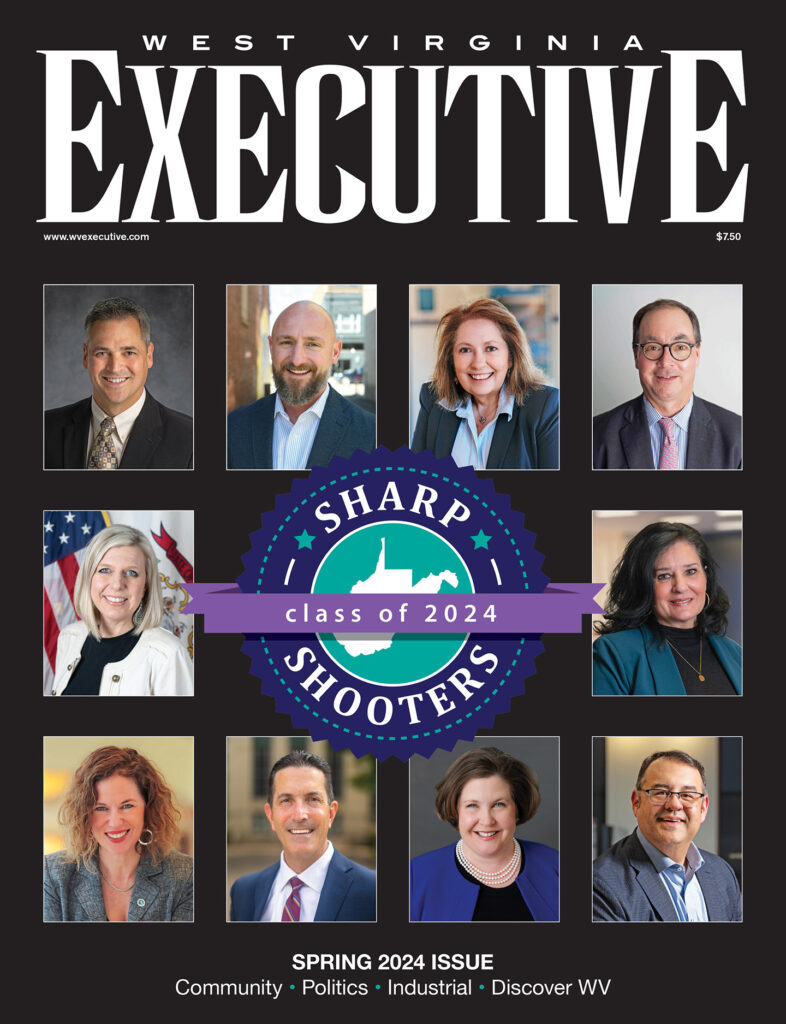
At a regional competition in Raleigh, N.C., the MARS team received the highest award given in the organization, the Chairman’s Award, for running a strong program based on educational outreach.
By Diana Mazzella
When the school bell stops ringing and the buses have departed, the middle and high school students of West Virginia return to their other lives—the lives where they talk on the phone, shop at the mall, write English essays and eat dinner.
For 28 high school students in the Morgantown area, that other life is the career they have before they even fill out their first college application. It’s a life where they gather in a basement laboratory at West Virginia University (WVU) to build Marvin, their robot.
Every year they assemble something akin to a small business—a business that will never sell a single product. Some program the computers while others build parts; still others use social media marketing, and they all share their skills with their younger counterparts in robotics.
Marvin V was their robot during the 2011-12 school year. The Mountaineer Area RoboticS (MARS) team used late nights, weekends and snow days to build him in six weeks, the period of time given them by the FIRST (For Inspiration and Recognition of Science and Technology) organization, a national nonprofit dedicated to encouraging science, technology, engineering and math skills among K-12 students.
Once their six weeks of creation are over, the students of MARS compete against other teams along the eastern seaboard. This year, they won the robotics competition at the Pittsburgh regional competition; they were named the best at outreach at a regional competition in Raleigh, NC and their adviser, WVU Department of Physics Chairman Earl Scime, was named mentor of the year at the world competition in St. Louis.
It was a good year.
The five years leading up to now have been good years too, and the continued success found in the honors won by the WVU team and other middle and high school teams in West Virginia prove their importance.
For instance, of the former high school students in MARS, all have gone on to college on some form of scholarship. They also mentor the 41 middle school robotics teams throughout the state, exposing the younger students to problem solving, teamwork, mechanical skills and the wider world. They go to parades, civic meetings and youth groups and anywhere a child might see them and discover this new interest. For West Virginia, this goal is especially important.
Alex Stout is a WVU sophomore majoring in secondary education and has advised the MARS team since its inception. Because, according to the National Center for Higher Education Management Systems, only 17 out of every 100 West Virginians will complete any form of post-secondary education, he says it has become both his and the team’s mission to turn that statistic around.
“That’s a number that we really want to change by starting programs like this around the state,” Stout says.
On its face, the team’s goal is to build a robot and compete, but underneath that is the mission to brighten West Virginia’s future. The program is now in 23 West Virginia counties and a southwestern Pennsylvania county due to this team’s efforts.
“Yeah, the robot’s really cool, and it’s really exciting, and it’s a lot of fun,” Stout says, “but after the competition is over, all of our efforts are focused on getting more kids involved around the state.”
Scime, the award-winning mentor, built the team with Stout’s uncle, Phil Tucker, and five students. He was part of the group-hugs for the win in Pittsburgh, and he’s seen the team lose competitions with dignity. He’s witnessed their work, which often approaches 40-hour weeks on top of school and homework. Under his guidance, they’ve built the annual robot, fixed it when it’s broken, used video-game Kinect technology and never given up.
In addition, the students raise the nearly $40,000 a year it takes for the team to compete. The students write proposals, make presentations to community organizations, do contract work for NASA, partner with local businesses and sell energy-efficient light bulbs. Some of the students spend their summers using their high-tech skills working as interns for local tech companies. At the end of all of this, they are more than ready for college. Scime says they know what it takes to be successful, and he hires some of them in his research group once they come to WVU.
“From my perspective, the thing that they get out of this is that it takes a lot of really hard work to do something this complex,” Scime says. “This is the sort of effort it takes to create a Microsoft or a Google.”
According to an independent Brandeis University study, high school-aged participants in the organization, when compared with their peer groups, are more than three times as likely to major in engineering; roughly 10 times as likely to have an apprenticeship, internship or co-op job in their freshman year; twice as likely to pursue a career in science and technology and twice as likely to volunteer in their communities.
Kari DeMicco is a 16-year-old who lives in the rural countryside of Monongalia County. She was in a FIRST Lego League team for ages 9-14 before joining the high school team. Now she’s a spokeswoman for the team, leads the annual chairman’s presentation team and works with the middle school robotics program. She finds the most rewarding part of the process to be the team’s outreach and wants to be a 4-H Extension agent to keep working in youth development. It’s been these transforming experiences more than the robots that have risen to the top of her mind.
She says she’s been moved by her fellow high school students who have changed their path because of MARS, as well as by the interest in the robot’s design shown by a 7-year-old boy she observed at a public library read-aloud event.
“There are some kids that have joined our team that originally didn’t plan to go to college,” DeMicco says. “The program inspired them. Even if they don’t go into the engineering field, they’re still doing something positive with their life.”
About the Author
 Diana Mazzella is a senior writer at West Virginia University where she tells the stories of the faculty, staff and students who live and learn in Morgantown, WV.
Diana Mazzella is a senior writer at West Virginia University where she tells the stories of the faculty, staff and students who live and learn in Morgantown, WV.


